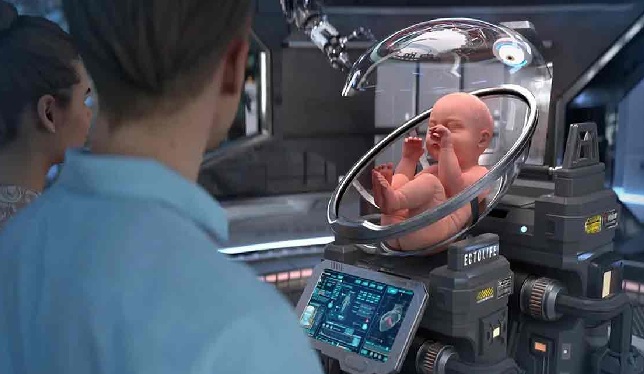Japanese scientists have developed the world’s first artificial womb capable of sustaining the growth of extremely premature human babies.
Resembling a fluid-filled capsule, this artificial womb is engineered to mimic the conditions of the natural uterus. Inside, the premature infant floats safely in a protective, nutrient-rich environment, continuing its development as it would inside the mother’s body.
The innovation targets high-risk, extremely premature births, where survival rates remain low and complications are common—even with intensive care. The goal?
To close the critical gap in neonatal support, improving both survival and long-term health outcomes.
The U.S. Food and Drug Administration (FDA) is preparing to assess this groundbreaking tech.
In upcoming sessions, regulators will weigh its safety, effectiveness, and ethical implications, a vital step before any human trials or clinical use begins.
If approved, this could revolutionize neonatal care, offering new hope to thousands of families each year. Not to replace natural pregnancy, but to offer a life-saving bridge when time runs out early in the womb.
More than a medical breakthrough, this is a redefinition of life’s earliest moments—a second chance, built in a lab.
What Japan Just Did
The Japanese scientists have successfully nurtured goat embryos from early developmental stages in a fluid-filled artificial womb for weeks…a timeline long enough to be considered proof of concept for human translation.
The research, led by a team at Juntendo University, used a transparent biobag system, oxygenated artificial amniotic fluid, and external umbilical support.
This is the closest the world has ever come to a complete ectogenesis (a term for gestation happening entirely outside the body).
Previously, we’ve seen partial ectogenesis in labs like the one at Children’s Hospital of Philadelphia, where premature lambs were kept alive in artificial wombs for a few weeks in 2017.
But Japan’s development pushes the start line further back.
This isn’t just a safety net. It’s a new starting line.
A Machine That Mimics the Womb
The artificial womb system is, in essence, a high-tech substitute for the placenta and uterine environment.
It includes:
A fluid-filled, temperature-controlled biobag that simulates amniotic fluid
An oxygenation system that mimics umbilical cord blood exchange
A nutrient delivery circuit that supplies everything an embryo needs to grow
Sensors and AI regulators that monitor fetal movement, heartbeat, and development in real time
Think of it as a synthetic womb crossed with an ICU. But quiet. Gentle. More like floating in a warm sea than lying in a hospital bed. And yes, it works.
The Bigger Picture: Why Japan?
Japan has long been at the frontier of robotics and biomedical engineering. But there’s also a deeper cultural backdrop here: Japan’s declining birthrate and aging population are national concerns.
In 2024, Japan had fewer births than at any time in its recorded history. And the fertility rate continues to drop despite government incentives.
Artificial wombs aren’t just a medical innovation. In Japan, they’re a potential social solution…a way to support working parents, mitigate maternal health challenges, and even change how society views gender roles in parenting.
It’s no accident this happened there first.
How Close Are We to Human Application?
Not tomorrow. Not next year. But not far either.
Experts estimate that within 10 to 15 years, we could see artificial wombs approved for partial use in neonatal care (especially for extremely preterm infants).
Full gestational ectogenesis (starting life from fertilized egg to birth!) will take longer and require immense ethical oversight.
But the scaffolding is already in place.
And if history tells us anything, it’s that today’s unthinkable becomes tomorrow’s standard far faster than we expect.
What This Could Mean for Reproduction
This could be the end of:
Dangerous pregnancies
Gestational surrogacy
The biological clock as we know it
The assumption that only women can carry life
And it could be the beginning of:
Fully elective womb-free pregnancies
New family structures (three-parent embryos, solo parenthood)
A divide between natural and synthetic gestation
Commercialization of gestation
Yes, that last one is chilling. But with biotech comes business. And with business comes…complications.

